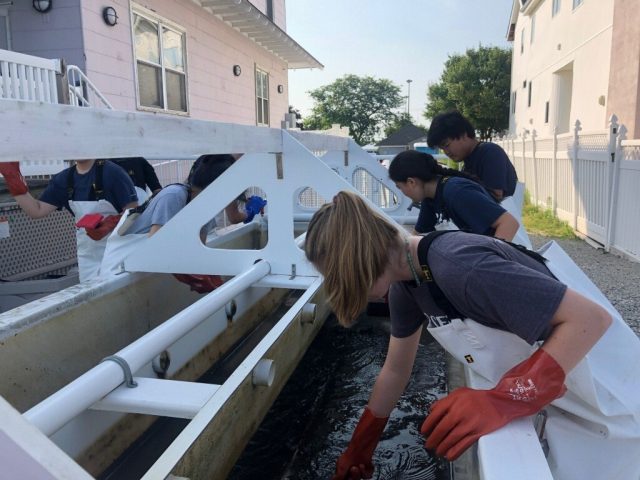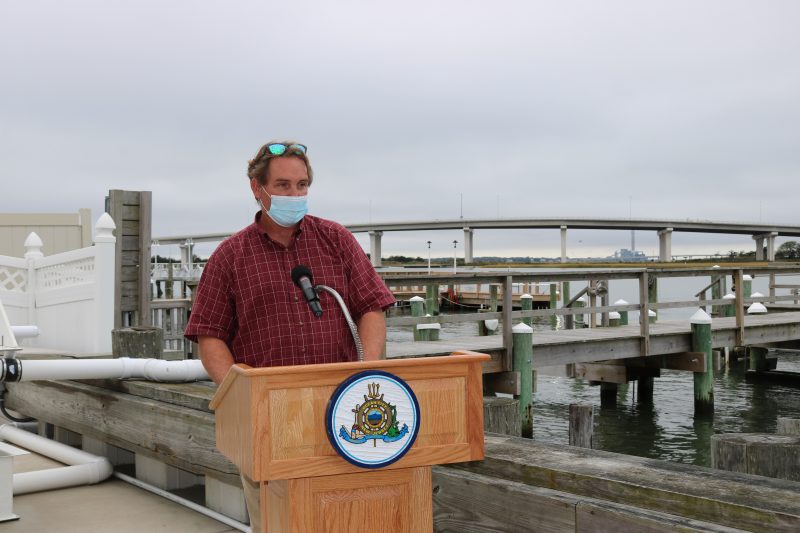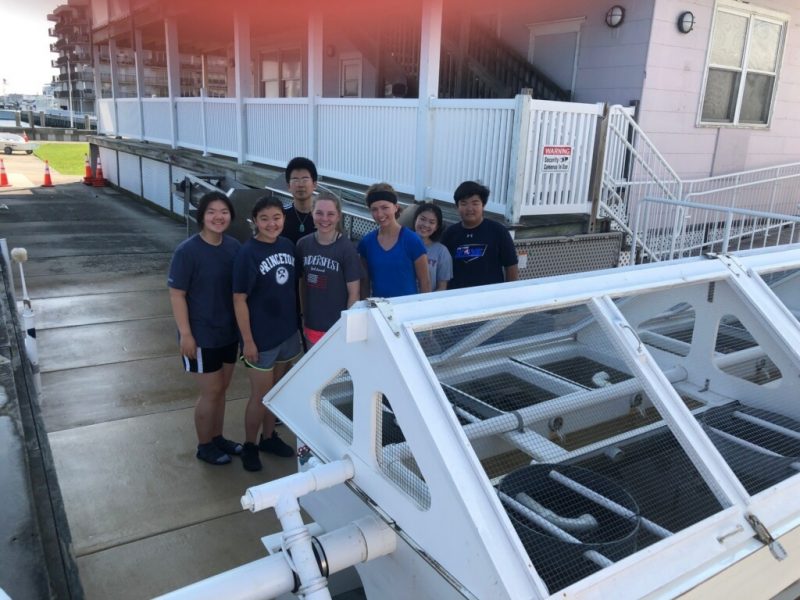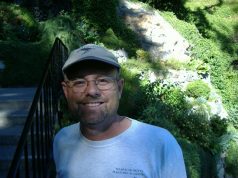
By MADDY VITALE
Ocean City High School students don’t mind getting their hands dirty – especially since they are doing work to help clean the bay waters.
Each Thursday, student volunteers, about six or seven, help their high school science teacher Keith Zammit with a project that began in the fall of 2020 at the Bayside Center, 520 Bay Avenue.
Specifically, students help clean an “upweller,” which is a shellfish incubator, and get a real hands-on approach to marine life and protecting the coastline from storms.
“It is a great project because we are helping clean up the bay,” Zammit said. “And it isn’t often that ninth and tenth graders can do actual research like this.”
The upweller consists of a tank system that pumps in bay water to “feed” oysters and baby clams their diet of naturally occurring microscopic organisms.
The shellfish play a critical role in the marine eco-system and have the ability to cleanse the bay waters by filtering out potentially harmful microscopic plants and animals, bacteria and viruses. They are also helpful in removing excess nitrogen from the water to prevent toxic algae blooms from forming, experts say.
Once the animals, as Zammit calls them, are large enough, they will be removed from the upweller and placed in the bay to live in their natural environment and help keep the water clean.

However, Zammit noted that the high school students don’t do that. The state Department of Environmental Protection picks up the shellfish.
“Once we are done with the research, we will package them up and the state DEP will come with a boat and take them and dump them at some undisclosed area,” he said.
Even through the upweller has been at Bayside Center since last fall, Zammit said the students and he just began working together on the project in June due to the pandemic restrictions.
Zammit said that the research they are doing will be provided to Rutgers University for their further studies.
When they clean the upweller, they drain it, remove the shellfish and two or three of the students scrub it with brushes and get all the mud and everything out. Then two or three other students will clean up the shellfish and take measurements of their growth to track it each week, Zammit explained. But that doesn’t stop his eager science students.
Zammit emphasized that cleaning the upweller can be a messy, muddy job.
“We don’t have any trouble finding volunteers,” he said. “The kids I ask why they like this stuff, they say it is for environmental awareness. What is so exciting about it is the kids are learning real scientific research.”
Just last week students began analyzing the amount of algae in the water. The shellfish feed on the algae.
The oyster seeds, for example, were just four millimeters when the project started last month and now they are at between 8 and 10 millimeters, Zammit said.
“This is definitely a successful project,” he said. “I am sure as the upweller program gets larger and larger we will be able to purchase more seed to dump into the bay.”
With success also comes hope for expansion of the project to do even more to cleanse the bay.
“We are hoping the state will give us permission to provide a small, educational research lot where we could build a couple of cages and during low tide, when the water is only three feet deep, we will be able to work on the side of the cages,” Zammit explained. “If we could do that, we could see them grow to adulthood at about 18 months. The cool thing about that is then we would be able to see what factors are affecting their growth rates.”






